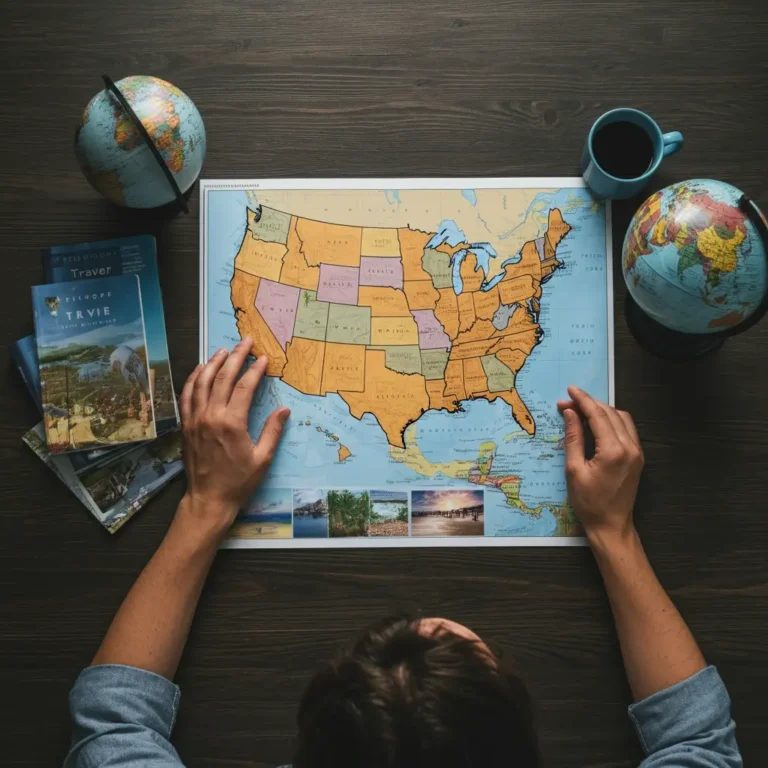Master the Art of Travel Storytelling: Preserve Memories & Inspire Adventures

Travel is one of the most profound ways to experience life. Every trip, whether it involves scaling mountain peaks or wandering through cobblestone streets, leaves behind a trace of adventure, learning, and growth. But what makes these experiences last forever isn’t just the trip itself; it’s how you share the story. Travel storytelling is an art that turns fleeting moments into timeless tales. It’s about preserving adventures, inspiring others, and fostering emotional connections through narratives that linger long after the final page has been read or told.
This guide will help you master the craft of sharing unforgettable travel stories. From preserving memories to crafting compelling narratives, we’ll take you step-by-step through the process of transforming your journeys into magic through words.
Why Travel Storytelling Matters
Preserving Adventures Through Stories
Every adventure is unique, filled with fleeting moments that deserve to be remembered. Travel storytelling lets you preserve these experiences in nuanced detail, almost like a time capsule. The power of storytelling lies in phrases that transport you back to the exact sound of waves on a secluded beach or the aroma of spiced markets.
For example, imagine hiking through the rolling hills of Tuscany, meeting locals who invite you for a meal in an olive grove. Without a story, this experience might fade into a vague memory. But through storytelling, you capture the essence of the sun-drenched fields, the warmth of homemade pasta, and the laughter shared around the table. This same sense of vivid recreation is what makes storytelling not just a tool but a gift.
If you’re looking for inspiration to fuel your next story, take a look at this list of Hidden Gems & Iconic Wonders: The Most Beautiful Places in the World for unforgettable destinations to explore.
Inspiring Others to Explore

Travel stories are more than just preserving personal memories; they hold the potential to inspire exploration in others. When you share a tale, like spending a night under a starlit desert in Morocco, you ignite curiosity in your audience. Maybe your friends have never been to Morocco—but, through your storytelling, they’ll feel the allure of its endless sands and mystical aura themselves.
Not sure where to start? Draw inspiration from the journeys of others, such as the empowering tales shared in The Power of Solo Female Travel: Empowerment, Adventure, and Growth, which highlight how traveling alone can create remarkable stories worth telling.
Stories also break barriers. Those who may feel hesitant to explore solo or visit less-traveled destinations can find encouragement through your adventurous narrative. Sharing personal, relatable accounts makes travel feel accessible to anyone reading or listening.
Key Elements of Travel Storytelling
Setting the Scene
The best stories pull readers in with vivid, sensory details. To craft an unforgettable travel story, set the scene early on. Answer questions like, “Where am I?” and “What does this place feel like?” Paint a mental picture for your audience—not just the sights but the smells, sounds, and sensations of a place.

For instance, instead of saying, “The city had vibrant markets,” describe the whiff of spices lingering in humid air, the jingle of bronze bangles clinking together, and the colorful cascade of textiles catching the sunlight. These details make your audience feel present in your experience, turning your memories into something they can viscerally sense.
Need ideas for destinations that allow you to craft captivating scenes? Browse 10 Must-Visit Destinations Before You Die (The Ultimate Travel Bucket List) for inspiration.
Breathing Life into Characters
Great travel stories aren’t just about the places; they’re about the people you meet along the way. Characters make your narrative relatable, offering insight into culture and humanity.
Say you met a shopkeeper in Kyoto who taught you the art of folding an origami crane. By including his kind smile, the pride in his craft, and even his hesitant yet enthusiastic English, you add richness to your narrative. Your readers connect with your story because it isn’t just about you anymore; it’s about shared human experiences.
If you’re looking to combine unique experiences and storytelling, visit How I Finally Completed My Ultimate Travel Bucket List (And You Can Too) for ideas on how to chronicle fulfilling achievements in your travels.
Building a Narrative Arc
Every good story has a beginning, middle, and end. Your travel tales are no exception. Start with the spark that sets your adventure in motion, like booking a spontaneous ticket or deciding to venture off the beaten path. The middle should explore challenges or surprises that arise on the trip, which make your story dynamic. Finally, tie everything together with reflection or a satisfying conclusion.
For instance, writing about scuba diving for the first time in Bali might mean starting with your fear of deep water. Build tension by describing the hesitation before taking the plunge. Finally, conclude with the awe you felt swimming alongside vibrant marine life and lessons learned along the way.
Tips to Craft Unforgettable Travel Narratives
Reliving Travel Memories with Detail
When crafting travel narratives, detail is paramount. Start by revisiting journals, photographs, or videos from your trip to help jog your memory. Each detail is a key to immersing your reader in your world.
Another trick is to focus on a specific moment rather than recapping an entire trip. For example, instead of summarizing your two weeks in Italy, recount the time you stumbled into a vineyard during harvest. Share how the air smelled of crushed grapes and how the local vintners welcomed you with fresh wine and laughter. Details like these transform the everyday into the extraordinary.
To add an element of the exotic and magical, check out Unforgettable Birthday Vacation Ideas for Families for unique moments to turn into compelling outlines.
Weaving Emotion into Your Tales
What separates an ordinary recap from a memorable story is the emotion. Share how you felt witnessing the northern lights for the first time or hearing waves crash while camping by the sea. Were you awestruck? Peaceful? Reflective? Your audience naturally connects when you allow them to feel what you felt.
For emotional and reflective storytelling ideas, you might find inspiration within Exploring the World Solo: The Ultimate Guide to Safe, Fun Travel for Women to frame meaningful connections.
Balancing Facts with Imagination
While it’s vital to stay authentic, don’t shy away from creativity. Add flair without deviating from the truth. For example, if the cacophony of a crowded Bangkok street overwhelmed you, describe it as the “city singing in chaotic harmony.” These imaginative, figurative elements make your descriptions vivid and compelling.
However, keep a balance. Over-romanticizing every aspect may deter authenticity, which is what truly resonates with audiences.
Effortlessly Sharing Travel Stories With Others
Using Visuals to Enhance Storytelling
Sometimes, a picture is worth more than a thousand words. When paired with your narrative, visuals like photos or videos amplify your stories. A detailed paragraph about the azure waters of the Maldives becomes even more engaging when accompanied by a photo of you lounging by the beach.
Complement your storytelling efforts with inspiration from stunning destinations like Hidden Gems & Iconic Wonders: The Most Beautiful Places in the World to enhance your travel narratives with breathtaking visual ideas.
Choosing the Right Platform
Identify how you want to share your stories and who your audience is. A written format such as a travel blog allows for depth and creativity, while Instagram posts reach a more visually focused audience. Podcasts or vlogs can engage those who love storytelling in audio or video formats.
Consider exploring the rich and diverse content available at Discover Japan’s Wonders: A Complete Guide for Your Next Holiday to weave storytelling into cultural exploration.
Inspiring Examples of Travel Stories
Some of the most admirable travel tales are built on challenges turned into triumphs or perfect moments that stand apart. A solo female traveler might inspire others by recounting her empowering trekking experience in Nepal. A family trip to celebrate a milestone birthday can become a bonding tale filled with joy and discovery.
By showcasing cultural insights, emotional growth, and unique encounters, these stories showcase how travel shapes us. You can draw on these examples to frame your narrative, adding a touch of personalization and heart.
Conclusion
Travel storytelling is so much more than recounting places you visited; it’s about bringing those places to life for others, preserving memories, and creating something magical. By incorporating vivid details, rich characters, and heartfelt emotions, you can transform your journeys into unforgettable stories.
Whether you’re sharing tales over dinner or publishing a blog for a worldwide audience, remember that the magic is in the storytelling itself. It’s in how you weave the sights, sounds, and emotions of your travels into a narrative that inspires, connects, and lingers.
Now it’s your turn. Reflect on your adventures, pick up that pen (or keyboard), and start transforming your memories into a treasure trove of unforgettable travel stories. For more insight on beautiful destinations, explore 10 Safe, Stunning Solo Female Travel Destinations to Explore in 2025 or From Castles to Cafes: The Most Fun Things to Do in Europe for added layers of inspiration.





